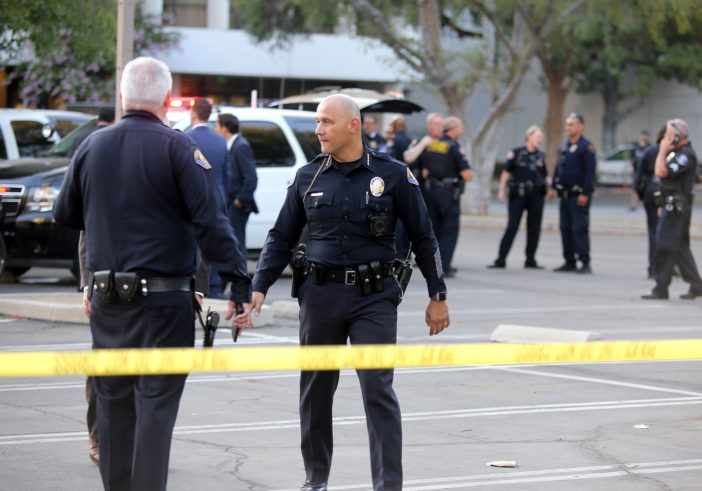Social issues such homelessness, mental illness and addiction are out of control.
Mass shootings are becoming almost routine and often fueled by heightened levels of hate and divisiveness.
And while law enforcement is not the cause of these complicated anomalies, the police are on the front lines having to deal with them, all at a time when scrutiny of law enforcement is more intense than ever.
Pasadena Police Chief John Perez said it’s time for law enforcement to devise a new model for doing business.
“Being in this profession now for over three decades, there is a need for us to look at the changes coming,” Pasadena Police Chief John Perez said. “We’ve got emerging issues and we’ve got fundamental changes happening in society which impacts public safety and law enforcement. They are clashing head on into each other.”
Perez is leading a Pasadena PD reorganization effort that will see a more streamlined chain of command, more detailed training and an emphasis on policing districts that address the needs of specific neighborhoods.
“We can’t stay the same,” the chief said.
Assisting the chief in the new organizational structure will be a Fiscal Administrator and Chief’s Special Services Lieutenant/ Adjutant.
A deputy chief will oversee three commanders of three separate divisions: Patrol, Special Operations and Criminal Investigations.
The Patrol Division commander will manage four area lieutenants along with lieutenants who supervise Field Training, Canine and Reserve units.
New neighborhood policing districts will be created, with emphasis on problem solving and partnerships with the community.
The Special Operations commander will oversee Community Services, Air Operations, Event Planning and Traffic.
The commander of Criminal Investigations will manage Violent Crimes, Major Crimes, Neighborhood Action and Special Investigations sections.
“Patrol is the largest group of personnel in the department with more than 140 people,” the chief said. “We’re simplifying them. We’re pulling the bike team out and pulling out the park safety specialists and putting them together. So that way patrol is just focused on good old fashioned police work.”
After the reorganization, the civilian workforce will have their own division and be overseen by a civilian executive administrator, who will ensure their voice and concerns are heard.
“What are we looking for,” Perez asked rhetorically. “A better structure to go after everyday issues and crime trends that pop up, a safer community focused on quality of life and reducing fear just by how we are helping design and implement lot of community initiatives, not just ours and to get out in front of the social issues developing. We don’t want another surge in gang members two or three years from now. We don’t want the homeless issue to worsen.”
The right type of training will be critical for the reorganization to succeed,” said Commander Jason Clawson, the chief’s adjunct.
“There are three tenants of policing that will bring about failure,” Clawson said. “Failure to supervise, failure to train and negligent retention. We need to do everything in our power to train the people right and we need to train the people with the best abilities we have, with the best technology.”
So reorganization effort is also about building an ongoing professional development curriculum for all personnel at all ranks, he said.
After months of conducting front line retreats to plan the restructure, Chief Perez met with sworn and non-sworn personnel, as well as community groups and other stake holders to conduct needs assessments.
The command structure has been put in place and 25 percent of the changes will be in place by December, Perez said.
The chief is already beginning to implement changes and hopes to complete the restructure in 2020 and will introduce a new neighborhood policing model in February.
Other changes could take at least three years, he said
“The expectations (on law enforcement) of today are much greater than they’ve ever been,” Perez said. You have to be a social worker and a psychologist. You have to have your head on a swivel now with the active shooters. What gets us to where we want to be at is the absolute need to reorganize our department.”
 Behind the Badge
Behind the Badge



